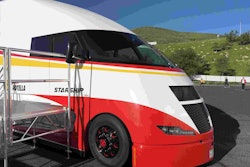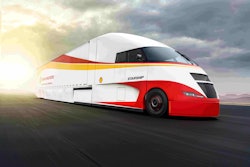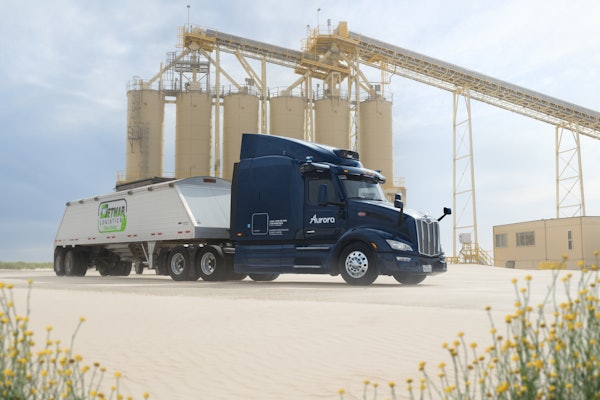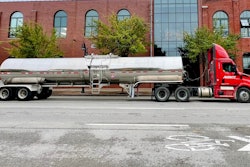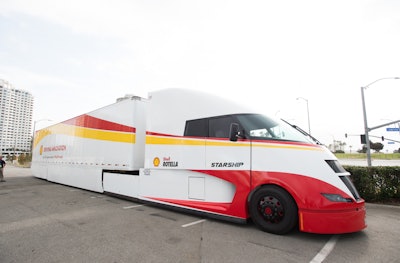 Shell’s Starship concept truck is making a cross-country efficiency test run this month, traveling from San Diego to Jacksonville, Florida, along I-10. CCJ contributor Tom Quimby caught a leg of the test run in Hammond, Louisiana, Wednesday.
Shell’s Starship concept truck is making a cross-country efficiency test run this month, traveling from San Diego to Jacksonville, Florida, along I-10. CCJ contributor Tom Quimby caught a leg of the test run in Hammond, Louisiana, Wednesday.The Shell Starship, a highly aerodynamic Class 8 tractor-trailer designed to test the bounds of fuel efficiency and cut emissions, has been attracting a lot of attention during its cross-country trip this week.
CCJ caught up with the Starship caravan Wednesday as it left Hammond, Louisiana, on its way to Biloxi, Miss. The truck, which began its trip in San Diego on May 18, is scheduled to end its 2,361-mile journey Thursday night in Jacksonville, Fla.
“Things are going really well. Reactions have been great,” said Megan Pino, Shell Rotella global brand manager and project lead for the Starship Initiative. “We’ve gotten lots of comments as we’ve been driving down the road listening to the CB, at the truck stops and at the rest areas that we stop at as well.”
The Starship’s aerodynamic features, designed by the AirFlow Truck Company, are hard to ignore. The truck’s bullet-like cab constructed of carbon fiber looks like it will easily pierce through the toughest headwinds. Next up are the long skirts and the boat tail in the rear.
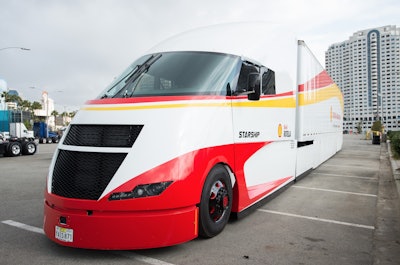
Pino said that fuel efficiency data from Starship’s run will be validated by the North American Council for Freight Efficiency following its arrival in Jacksonville. Data will be made available during a press conference on June 5.
The Starship left San Diego with a 39,000-lb. load of artificial reef material that will be used this summer off the Florida coast. In order to accurately measure freight ton efficiency, the truck had to haul a substantial load. The reef material was just icing on the cake.
“We wanted to do something with a purpose, not to just fill it with something heavy,” Pino explained. “This is a perfect opportunity to load it and also do some good in the process.”
Starship has been making trucker appreciation visits at Loves Travel Stops and rest areas along the I-10 corridor. The truck is expected to arrive at EverBank stadium Thursday in Jacksonville around 6 p.m.
So, what’s next for Starship following its arrival in Jacksonville?
“We hope to continue to work on the truck to make additional improvements and do some additional testing,” Pino said. “We hope to continue to keep the project going.”




